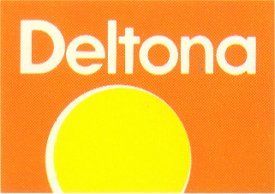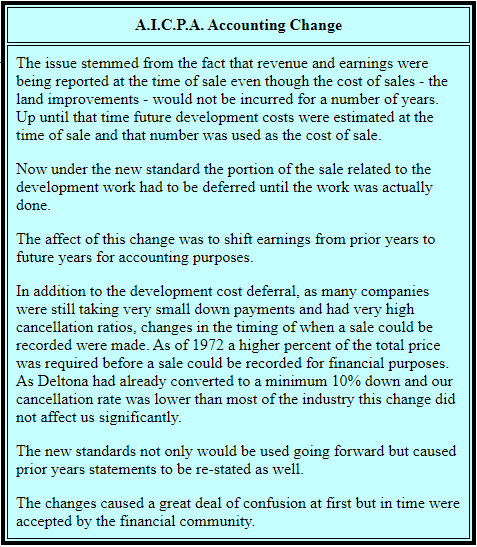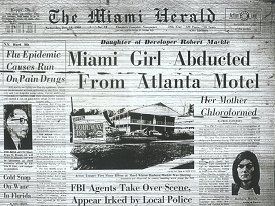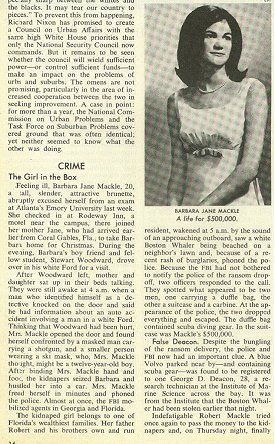ALONG THE WAY... MORE NEW CITIES... INCREDIBLE ACCOMPLISHMENTS!
It may seem - at this point - that Marco dominated the day-to-day operations of The Deltona Corporation. To leave this impression would be a mistake. Much more was going on at the same time.
While the Marco story was evolving other new properties were being acquired, planned, opened, marketed and constructed. Each and every new community would be another jewel in the Mackle crown. And growing out of the community development business were a number of new opportunities - a lumber company, manufactured homes, the expanding utilities division, a hotel division, a mortgage company .... and more.
In the years from the opening of Deltona Lakes in 1962 to the mid eighties when the Mackle family separated from The Deltona Corporation the Mackles were making exciting things happen all over the state of Florida.
As the sales force grew and land sales increased, more and more focus was put on acquiring new land and planning new communities. And construction of homes, condominiums, commercial properties and community amenities was being stressed as never before.
THE FIRST TEN YEARS
In the 1963 Annual Report - after reflecting on the outstanding first year financial results - Dad set the tone for the future of the company.
"Today The Deltona Corporation is deeply involved in the continuing growth of Florida, with primary emphasis on the large and expanding retirement market. On a broad front, through the development of complete planned communities, we seek to meet the living needs of a growing segment of the population in a growing state, and by our own efforts to foster additional growth."
"Our first year brought other important trends, too. We are, for example, pleased with the quality of our sales during 1963, and with the high proportion of home sales to home site sales....The Deltona Corporation already is a different sort of company from others in the field... The fact that we do practically all of our own work - from acquisition of the raw land through the planning and engineering to the construction of homes and other community facilities..."
"Unlike most companies in our industry The Deltona Corporation is basically a construction company. Its operations include land development. but they also include construction of homes and apartments, the construction and operations of utilities, the development and operation of commercial properties... For your Company, the development and sale of land - profitable though we have proved to be - is not an end in itself. It is only the prelude to our real objective: the construction of full communities."
He ended his letter with the news of the recently formed venture at Marco Island.
In his 1964 Letter To Shareholders, Dad noted:
"home sales more than doubled... the increasing success of our new concepts of community development ... our sales organization ... increased in size ... and ... the quality of our sales remained consistently high".
He commented on the opening of Marco Island early in 1965 and predicted (accurately! - but in ways he never imagined) that:
"fees and the profits from sales at Marco Island will have an increasing impact upon your Company in 1965 and subsequent years."
The Annual Report for 1965 noted the emphasis on home sales and a new - first time in the industry - revolving finance agreement which used land sales receivable as collateral. It also noted that the planning for a new - as yet unnamed - community was under way.
Probably the most dramatic growth was taking place in the Marketing Department. The marketing organization now had sixty nine franchised offices located throughout the East, Midwest and Southeast. In addition there were offices in Latin America, Western Europe and the Far East. Branch offices were now located in New York, Chicago, Philadelphia and Frankfurt Germany among others.
On the advertising and promotional front there was another innovation. The first Worlds Fair in New York City since the late 1930s was opening. And the State of Florida had a sizeable exhibit. Among many exhibits promoting the Sunshine State was a compact water ski show and nearby - a Mackle Built Florida home.
At a cost of over $100,000 we had built a home that we were offering in Florida for under $12,000. New York Union costs were a little higher than Florida's! We were the only builder allowed in the Florida exhibit.
Tens of thousands of people toured the home over the next two years and our New York sales offices completed many sales of our Florida properties as a result.
The year 1965 also marked the third straight year of dramatic growth at Deltona Lakes with more that 1,200 homes completed since the opening, extensive road building activities and nearly 57 miles of water, sewer and gas lines in place, the Deltona Lakes golf and country club had opened and The Deltona Inn was in operation.
Also being completed were the projects that were inherited from C.K.P. development - the Lake Maitland apartments on the outskirts of Orlando and the subdivision in Daytona - Winston Park.
1966 was a particularly momentous year!
In June, Frank E. Mackle III joined his Dad at Deltona.
When I joined the company - after graduation from Notre Dame in the early Summer of 1966 - Deltona Lakes and Marco Island were still in their early stages of development and sales and the main thrust of Deltona's land planners and land development team was on the new community of Spring Hill.
Driving north from St Petersburg thru Clearwater on US 41 - in the mid 1960s - there was a long undeveloped gap until you hit the little town of Tarpon Springs. Heading north again from Tarpon Springs - again through cow pastures and undeveloped scrub pine lane - the next place of note was Weekie Wachee Springs, a roadside tourist attraction and then 35 miles further was the town of Crystal River or turning northeast - 15 miles - the little town of Brooksville.
Between Clearwater and Brooksville were miles and miles of gently rolling oak tree covered and lake dotted raw land.
It was in the middle of this stretch of undeveloped west Florida that the Mackles found the site for their third Deltona Corporation community - Spring Hill.
A total of 21,440 acres was acquired but - true to the Three Mackle Firsts - only 15,000 of it would be included in the master plan. The rest was set aside as inventory. They paid approximately five million dollars for the land - about $230 per acre!
The land had a gentle roll to it reaching 130 feet in elevation at its highest point. A forest of young oaks covered the landscape. Twenty - mostly spring fed - lakes dotted the property. The fresh water supply was the best and its source was the deep underground aquifers that fed nearby Weekee Wachee Springs. Four miles away was the Gulf of Mexico.
Incorporated in to the master plan were all of the amenities and facilities necessary for the future city. Included were seven school sites. 23 church sites 500 acres of commercial-business property and 165 acres for future industrial development. Where Deltona Lakes had only one golf course planned Spring Hill would have two. As a part of the Coordinated Growth Plan. Like Deltona Lakes two housing cores were planned.
During the planning process the working name for the community was Spring Lake (after the small town where Dad and the family summered) until it was discovered that there already was a Spring Lake, Florida.
Spring Hill opened to huge crowds in May of 1967.
Sales of home sites at Spring Hill went at a record pace and the 28,500 platted lots were essentially sold out in three years!
Spring Hill was the site of one of the more creative publicity events initiated by Deltona's Public Relations department:
The annual Spring Hill Chicken Plucking Contest!
Masaryk Town - just east and south of Spring Hill - is said to be the Chicken Capital of the World. So someone came up with the full day outdoor carnival with a chicken-and-egg theme. The featured event - late in the afternoon - was a competition to see who could pluck the most chickens in a fixed amount of time. Contestants lined up on stage waiting for the gun to go off and start plucking.
To get everyone in the chicken-plucking mood - and to provide a spectacular scene for the evening news - great quantities of feathers were fed into large commercial fans behind the contestants. The contest was a riot with feathers flying and the audience cheering on their favorites.
It was amazing how much publicity we received from that crazy event. It even made national news on one or two occasions!
1967 also marked the fifth birthday of Deltona Lakes.
Acquisitions of new operating subsidiaries were the main feature of 1968. Five years of revenue growth and increasing profits spurred the Mackles interest and ability to expand the company in new ways.
During the year Dad announced the acquisition of Imperial Lumber Company one of the largest independent lumber and lumber products suppliers in Florida. Bill Delph long time president of Imperial joined the Deltona-Mackle team. Imperial's headquarters and extensive lumber storage, truss manufacturing and millwork operations were located on airport property in Bartow, Florida.
Through Imperial Lumber, the company not only prospered from the sale of lumber products but Deltona secured a source of building supplies for all of its construction activities. Imperial would also be the spearhead for later adventures in the Mid-East and in Honduras.
Also in 1968 the Mackles acquired a small producer of high-end mobile homes - Fortune Homes.
Located in Sarasota Florida, Fortune Homes, had - for many years - been successful selling more expensive mobile homes to the growing market for this type of housing. High quality, retirement oriented mobile home parks were becoming very popular in Florida in the 60s and the Mackles hoped to combine the manufacturing skills of Fortune with its own community development activities. Sam Dee, who grew up in the mobile home industry, was the president of Fortune Homes.
But at the end of the year 1968 the attention of the Mackle Brothers was not on acquisitions.
Early on the morning of December 17, 1968 Roberts daughter, Barbara Jane Mackle, was kidnapped.
Barbara was attending Emory University and was in the midst of final exams for the first semester. Barbara had been sick with the flu and her mother, Jane, had flown up to Atlanta to stay with her. They were staying at the Roadside Inn outside of Atlanta when two people, one disguised as a policeman, entered their room early in the morning, chloroformed Jane and took Barbara away for the beginning of a horrifying - four day - nightmare.
On the fourth day Barbara was found alive after spending 83 hours sealed in a wooden box buried in the hills on the outskirts of Atlanta. The perpetrators were later apprehended and convicted.
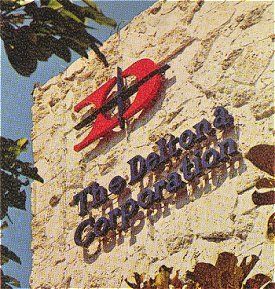

1963 Annual Report
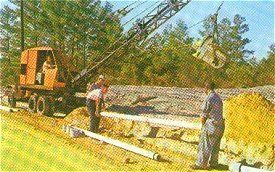
Water Mains Going In
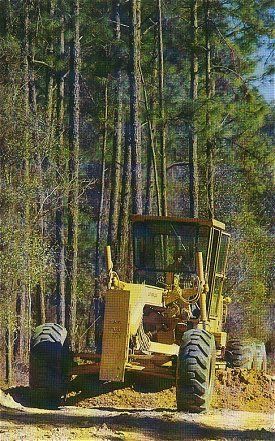
Roads Under Construction
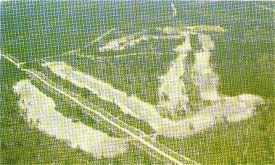
Deltona Lakes Early 1963
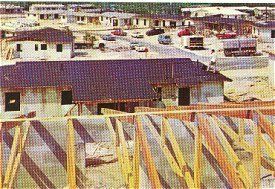
Homes Under Construction
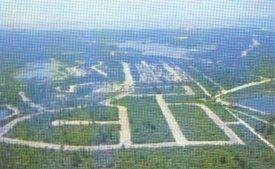
Deltona Lakes Early 1963
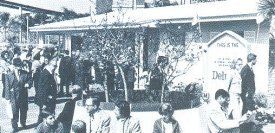
Worlds Fair House

Advertising & Publicity

Don McNeill Hosts the 3rd Birthday Party & Broadcasts his Daily Radio Show from Deltona Lakes
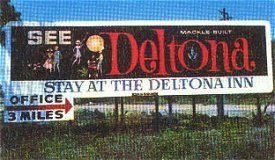
Billboards Cover the State
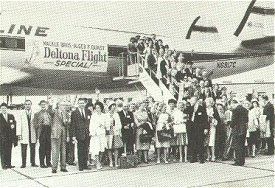
Sponsored Air Trip
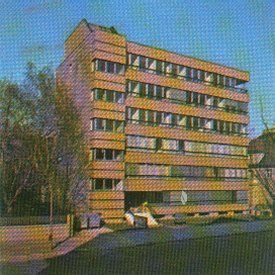
Frankfurt Germany Branch Office

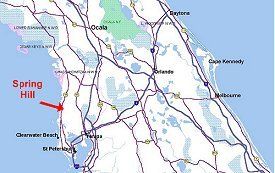
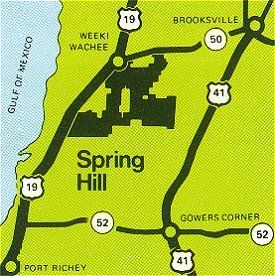
Locator Map
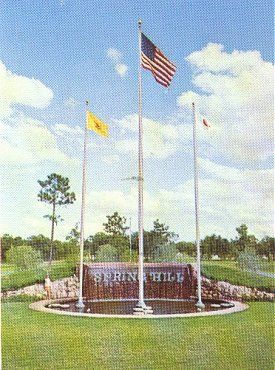
Spring Hill Entrance
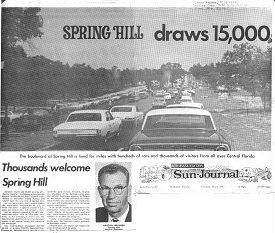

Spring Hill Sales Office
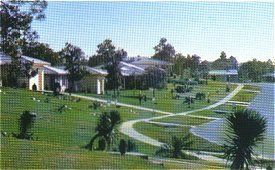
Spring Hill Lakefront
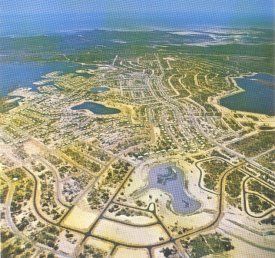
Spring Hill First Housing Area
& Gulf of Mexico in Background
1970
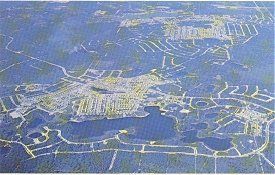
Deltona Lakes Late 1967

Deltona Lakes 5th Birthday
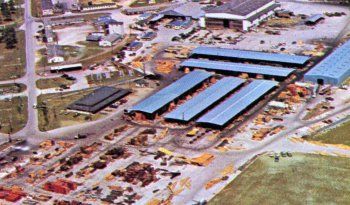
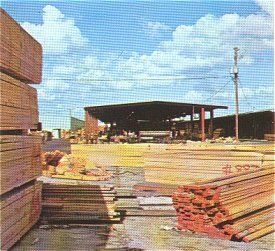
Imperial Lumber Company
Bartow, Florida
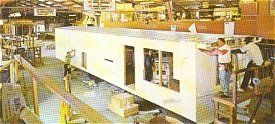
Fortune Homes 1968
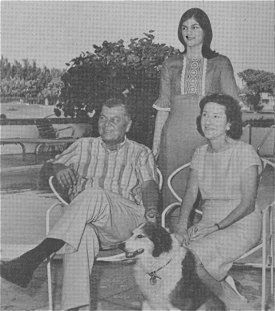
Robert - Barbara - Jane
THE KIDNAPPING
Anyone wishing to know the full details of the Barbara Mackle kidnapping should read Gene Miller's book 83 hours Till Dawn.
Provided here is a synopsis of the events which was published in the December 27th 1968 issue of Time magazine.
A few comments that I will add that - I believe - are pertinent to the larger story.
The pressure and intensity of the ordeal brought the Mackle Brothers and their friends closer together than they had ever been. Dad and Elliott were with Robert and Jane through it all. Billy Vessels' help can only be described as heroic. Bill O'Dowd, Neil Bahr, Jim Vensel and many others put business and personal obligations aside and responded to any and all calls for assistance. Our business associates at First National Bank of Miami (later Southeast Bank) went way beyond the call of duty to help.
The FBI was incredible. At the peak of the case over 150 agents were involved in Miami alone. The book tells the story better than I can but we will forever have praise and admiration for the work and the dedication of those who brought the nightmare to an end.
Some of it is vague in my mind now but I remember that Loretta and I and our young children, Frank, two years old and Laura a little over a year of age were living in Coral Gables at 4900 San Amaro. My uncle Robert, his wife Jane and Robert Jr. and Barbara lived at 4111 San Amaro in a house on Riviera Country Club about eight blocks north of us.
Dad, Mom and Nancy were in New York when they received the news that Barbara had been kidnapped. They thought at first that it was a hoax ... we all did.
Then - the next morning - the letter was found in the back yard of the Robert Mackle home.
It was then that we knew it was for real .... and then began the horror of knowing that Barbara was buried alive.
There was the early paranoia that it might be a conspiracy extending to other members of the family.
I remember Loretta, myself, our two children as well Mom, Dad (although he was with Robert, Jane and the FBI at Robert's house through most of the ordeal), Nancy and the Elliott Mackles all moving to the Key Biscayne Hotel for the duration.
Hotel security was beefed up.
I remember three days where only one thing mattered - getting Barbara back safely.
I remember the elation at the news that she had been found.
And I remember living with the unwanted connection that strangers made for years with the Mackle name.
Finally everyone asks how did Barbara survive it? How is she today?
I have seen her only on rare occasions since then. The families have gone very separate ways. But from what I have heard she has had no serious after affects. She went on to marry Steward Woodward and they are today (2001) living in Vero Beach. She has two children.
The kidnappers, Gary Steven Krist and Ruth Eisemann Schier were were captured and convicted. Krist was released after ten years. Sheir got out after only two years and was sent back to her native Honduras.
The book is pretty accurate as far as I know. One or more movies have been made - very loosely using the case as a basis. From what I have seen they are not good accounts of the event.
By early 1969 things were pretty much back to normal.
And now land acquisitions were a main focus.
Negotiations for the acquisition of other 50% of Marco Island Development Corporation from the Collier interests were completed.
As land sales accelerated through the 1960s, the success of the marketing organization demanded that planning be done to keep up. Up until the now land acquisitions were done primarily by the Mackles - Elliott did most of the front end land prospecting - and Jim Vensel and Neil Bahr.
After the opening of Spring Hill and its rapid pace of sales it was realized that more effort had to be made to assure the company of sufficient land inventory for the future. By 1969 platted lots in the Three Seasons Communities were being gobbled up at a rate of over 15,000 per year. The sales force was - in effect - selling out a new community every two years! Inventory availability was a real concern.
To deal with this - nice - problem a full time real estate person was hired solely for the purpose of seeking out and acquiring new land. Under Neil Bahr's direction Elliott Compton was assigned as a roving property acquisition expert. Traveling throughout Florida in a travel trailer he began to - without identifying his connections - contact realtors and property owners inquiring about larger properties holdings around Florida. Several of the properties purchased in the late 60's and early 70's came from this focused effort to seek out new community building opportunities.
In 1968 land acquisitions of 24,700 acres in Washington county and 1,500 acres in Seminole county were announced.
The 1969 annual report describe an additional 49,000 acres of future development land added to Deltona's inventory during the year.
Included were a 9,040 acre addition to Marco Island, 27,188 acres in Citrus county and 9,796 acres in Marion county.
At the end of 1969 properties acquired by the Mackles over the past eight years included:
| Properties in Development and Released for Sale | ACRES |
|---|---|
| Deltona Lakes | 15,000 |
| Marco Island | 19,512 |
| Spring Hill | 21,440 |
| Lake Maitland | 11 |
| Daytona | 400 |
| Properties in the Planning Stage | |
|---|---|
| Citrus County | 15,580 |
| St. Johns County | 1,839 |
| Properties Held for Future Development | ACRES |
|---|---|
| Tampa Property | 6,495 |
| Orlando Property | 10,462 |
| Seminole Property | 1,563 |
| Cocoa Beach | 7 |
| Citrus County | 11,588 |
| Marion County | 9,796 |
| Washington County | 24,700 |
| TOTAL ACRES | 138,393 |
Including the unsold property in communities already on the market nearly 100,000 acres of that land inventory for the future - on the books at very low prices!
One of the 1969 acquisitions - in Citrus County - was being planned as rapidly as possible into as the next retirement community - Citrus Springs - which opened on January 4, 1970.
The west central area of Florida is blessed with an abundance of fresh water, beautiful rolling countryside laced with rivers. It is a lovely part of Florida abundant with wildlife and some of the best bass fishing in the country.
This part of Florida - from Polk County to Citrus County - holds rich deposits of limestone and phosphate. In the Dunellen area there exist many older, played out phosphate mines abandoned years earlier. At first these mining operations leave deep excavation pits. Later - after many years - as nature takes over these terrible scars they become gorgeous - lushly foliated - canyons with steep, tree covered sides and beautiful deep lakes at the bottom of the hundred foot cliffs. Today these old phosphate mines are sought out by developers and are the sites of some of the most beautiful golf courses in the state.
At the turn of the 1970s the Mackle Brothers were pioneering again! - in another beautiful - but out-of-the way - area of Florida.
Citrus Springs consumed 15,000 acres of the 27,000 acre Citrus County acquisitions. It was planned along the design of Deltona Lakes and Spring Hills and was intended for the same - low income - retirement market.
The balance of the Citrus County land was being planned in to a separate community embracing a totally new concept. This new community would open two years later as Pine Ridge.
One slight irritation occurred in January of 1970 when Barrons published an article by Abraham J. Brilhoff criticizing the accounting methods of all land sales companies. While it was a disturbing note to the otherwise prosperous year it was dismissed as having no merit. A couple of years later the repercussions caused a significant restating of company earnings and - looking back - was the first negative event of what was later to turn into a very difficult decade.
Also on the down side of an otherwise excellent year, early in 1970, Dad's oldest and closest brother, Elliott, retired at age sixty one. He would remain as a consultant until his death in 1978.
But in the first year of the decade every aspect of the business was growing ... and booming.
In 1970 the newly acquired Fortune Homes Corporation underwent significant changes. Mobile home production had been replaced by factory production of homes which met the same codes as site-built housing. The Fortune Homes name had been changed to Deltona's Manufactured Homes Division. Deltona's architectural department, under the direction of Herb Savage, brought their talents to the effort and a second generation of manufactured homes was being produced.
And a new community, designed exclusively for the manufactured homes, was on the drawing board. It was to be called St. Augustine Shores.
Opened in December 1970, St. Augustine Shores was a very different community. It was a housing-only community and it was designed to compete with the very popular upper-end mobile home communities of that time. But - as usual - the Mackles went a step further. This community would be much larger than any of its competitors, 1,854 acres and 7,000 homes not including it multi-family sites. And it would incorporate an eighteen hole golf course and a large recreation center on the Inter-Coastal Waterway known as the Matanzas River in that part of the State.
To serve the needs of St. Augustine Shores and future projects a new manufacturing facility, 120,000 square feet in size, had been opened in Bradenton Florida and an identical plant in St, Augustine, adjacent to the new community would be opened in 1971. The capacity of the two plants was - at least - 4,000 homes per year.
The property was magnificent. There were over two miles of frontage on the inland coastal waterway. The land was mostly pine covered but had stands of large old oak trees in many areas.
One special attraction to the property - and this part of the state - was the historic city of St. Augustine, five miles to the north.
Also from the Manufactured Homes Division, in 1970, a prototype two story apartment building was installed on a site at Deltona Lakes.
At the Deltona headquarters, in Miami - in 1970 - company growth was reflected by the completion of a new six story office addition to their offices at Five Points.
Acquired three years earlier Sunny Hills the newest of Deltona's master planned retirement communities opened in June 1971. The Mackles were again charting new territory - the Florida Panhandle.
Even the marketing department had to admit the "three seasons" moniker was a bit of a stretch as they began to extol the "year round climate" and the proximity to major northern metropolitan areas. Featured more prominently was the gorgeous, rolling, forested and lake dotted beauty of the land and the proximity to the "Miracle Strip" - the popular beaches in and around Panama City to the south.
The property was probably the most physically beautiful of all with topography ranging from 70 feet to 300 feet above sea level. Gorgeous deep water, spring fed lakes dotted the property.
During 1971 further innovation in the Manufactured Homes Division resulted in a "Third Generation" design achievement. The "second generation" homes - built for St. Augustine Shores - while fully conforming with Florida site-built codes were - architecturally - closer to double wide mobile homes than houses. The goal was to produce - in a plant - a home for the traditional Deltona communities which when completed was indistinguishable architecturally from a site built home.
By the end of the year the goal had been reached. The homes were - when finished - equal to the best of the Mackles site-built homes - even including concrete slabs poured in the plant and transported by semi-trailer to jobsite.
The new product was ready to be unveiled.
At the January 1972 Deltona Sales Convention a "Third Generation" model - was installed on a lot at Marco Island - and was and opened for inspection. At the convention it was announced that the new manufactured home line would be available to lot owners at all of Deltona's "Three Seasons Communities".
They were very well received.
In early 1972 the Mackles received news that the New York Stock Exchange would now list the company stock. Previously, shares had been traded on the American Stock Exchange and the move up was a "seal of approval" from the financial community.
Acquisitions continued during 1972 with the purchase of 9,100 acres in Putnam County.
But the focus of the year - from a community standpoint - would be on a totally new kind of project.
The company had purchased 27,000 acres of land in Citrus County. The one of the "Three Mackle Firsts" was "Limited Size" of 15,000 acres. So about 12,000 acres were sitting in inventory.
Marco Island had opened up a totally new market of upper income buyers. And Marco inventory was dwindling.
So Jim Vensel and his staff were tasked with designing a completely new - upscale - concept on the Citrus County property - an Equestrian Community.
Pine Ridge Country Estates opened on March 1st, 1972 and was an immediate success.
As the 1972 annual report describes it:
"Pine Ridge Country Estates... is located on the perimeter of Florida's Thoroughbred country... it is designed as an 'equestrian community' - a place for the family that likes horses and riding, the people who like country club living and elbow room."
The minimum sized lot was one acre and home sites ranged in size up to 5.5 acres. The early central amenity was a luxurious equestrian club with lounge and meeting rooms, stables, tack room, paddock and show ring in the heart of a 94 acre recreation complex. Riding trails were designed as part of the master plan to wind throughout the community.
In the 1972 annual report Dad reflected on the 10th anniversary of his company;
"In every way - product development, steady expansion of our planned communities, revenues and profits, financial stature, diversification - your Company has come a long way.
And it pleases us to report that, of all the years in that decade of growth, 1972 was the biggest."
"Revenues climbed strongly, rising 31.3 percent from the year before to a new all-time high ... Profits moved in the same direction, rising to a new historic peak....the year's success, however, was not recorded only in terms of dollars."
....expenditures on land development at the communities far exceed those of any previous years
....the year's sharp increases in housing sales reflected an unprecedented rate of home and apartment construction at the communities
....our lumber company operation recorded major growth
...our sales organization had grown tremendously ...
....our hotel operations, with the luxurious new Marco Beach Hotel setting an unexpectedly good pace, more than tripled the revenues of any previous year
.... we inaugurated our own airline to provide improved transport services for Marco island
.... and, we entered the mortgage business through a new subsidiary."
"The Deltona Corporation did more than achieve record results in 1972. the year's operations added to those of prior periods, set the stage for acceleration of the past decade's growth rate. The Company's financial condition is sound. Its land inventory and other resources are ample and increasing constantly in value. the Company's operating capabilities and executive talents are unmatched in the industry?
"In short, Deltona should be able to make the most of the vast opportunities that lie ahead. Your Management is determined and confident that Deltona's first ten years will be far surpassed by the next 10 - and by the years beyond that, as well"
And that is the way we all felt.
At the peak of prosperity and with the organization over 2,500 employees and seven communities to manage the company now had a small fleet of corporate aircraft. Included in the fleet were several small single engine Censas two Beechcraft King Airs and one magnificent twin-jet Jetstar. This in addition to the aircraft being flown by Marco Island Airways and the mosquito control operation at Marco.
Every working day company personnel - on schedules arranged earlier - left Miami from Tamiami and later Opa Locka airport on the Cesnas or Beechcrafts to travel to one or more of the many communities around the state landing at nearby private air strips. The Jetstar was usually reserved for senior executives.
Introduced in 1972 - there was even a new logo for the company !
It had been ten very good years.
At the end of 1972 there were only two thing to detract from the rosy picture.
First, the American Institute of Certified Public Accountants (A.I.C.P.A.) after eighteen years or more using the current practices decreed that new standards be used to report revenue and earnings from the installment sale of land. Their review had been initiated by the Barron's article of a few years earlier.
And second, there was the delay in the Marco permits. But that would be rectified soon.
As it turned out, 1972 was to be the high water mark for Deltona.
From 1973 on adversities dominated the era. While there were many achievements, the focus of the next few years was on dealing with adverse economic conditions, fighting for the Marco Permits and then - after the denial - working with all of our might to overcome tremendous impact of the Corps decision.

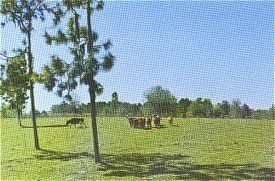

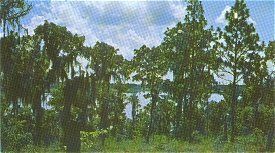
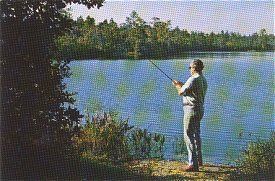
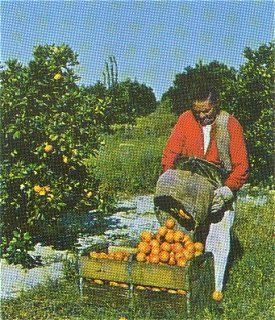
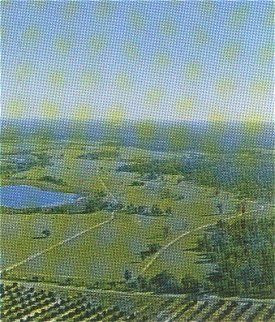
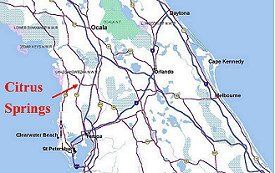
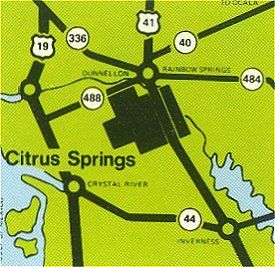
Locator Map
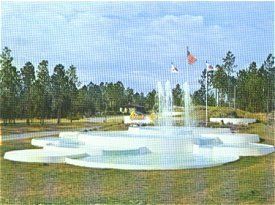
Citrus Springs Entrance

Withlacoochee River
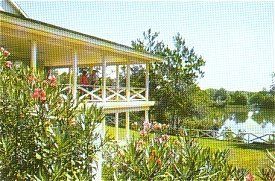
Citrus Springs Recreation Center
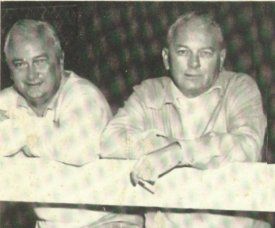
Dad & Elliott
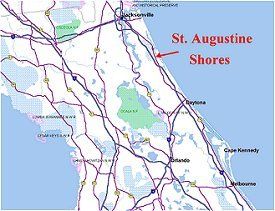

Locator Map
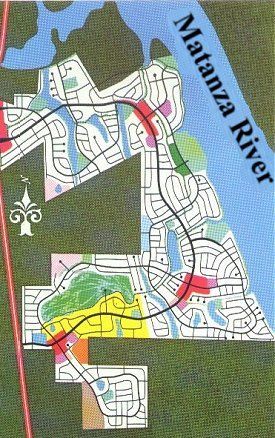
St. Augustine Shores Master Plan
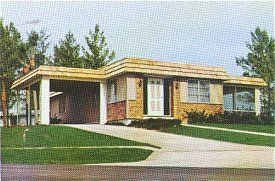
Second Generation
Manufactured Home
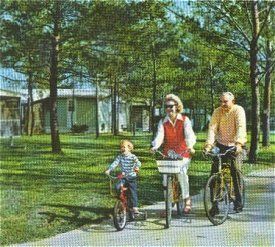
St. Augustine Shores
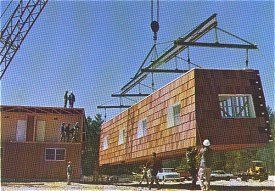
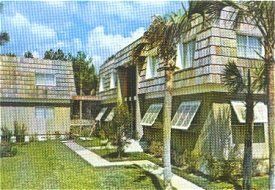
Deltona Lakes
Modular Apartment Building
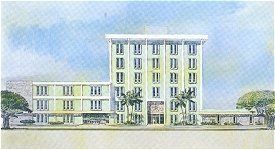
New Corporate Headquarters
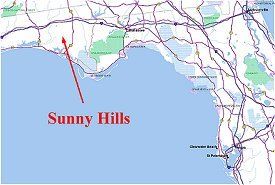
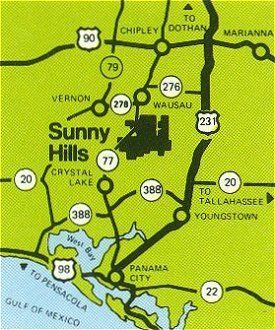
Locator Map
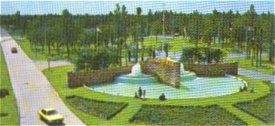
Sunny Hills Entrance
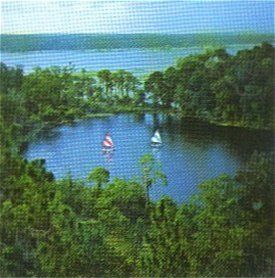
Sunny Hills Lakes
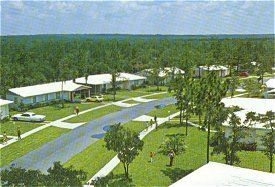
Street at Sunny Hills
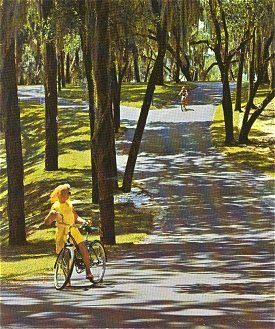
Bike Path at Sunny Hills
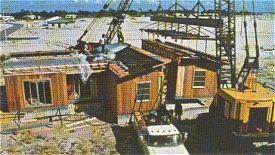
Installation of Pondarosa Model at Marco Island
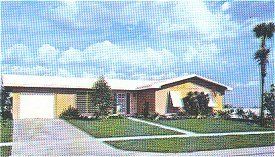
Ponderosa Model

Sequoia Model
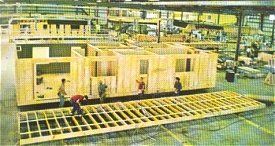
Production Line

St. Augustine Shores Plant
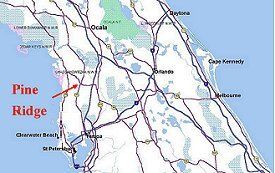
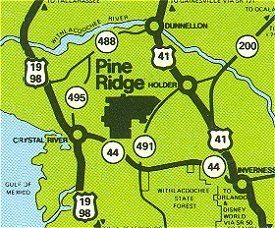
Locator Map

Equestrian Club & Show Ring
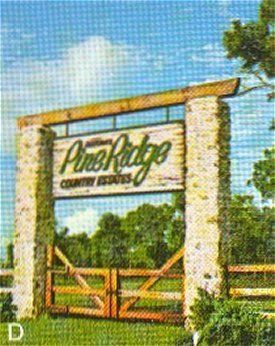
Pine Ridge Entrance
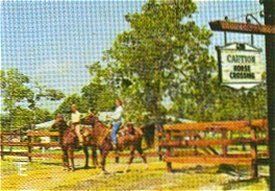
Pine Ridge Trail Ride
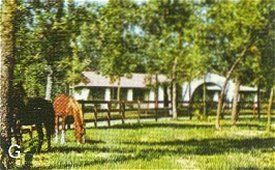
Equestrian Club Entrance
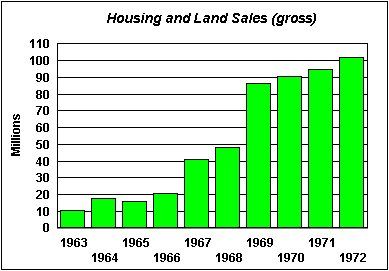
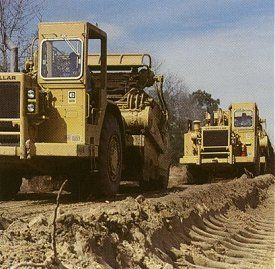
Land Development
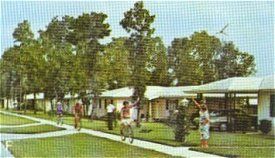
Homes
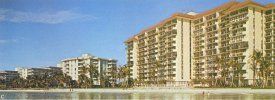
Condominiums
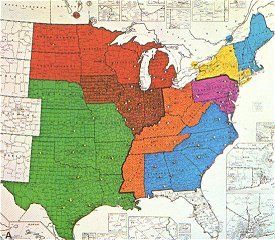

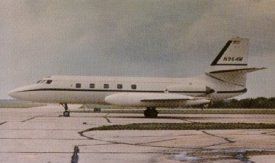
Jetstar
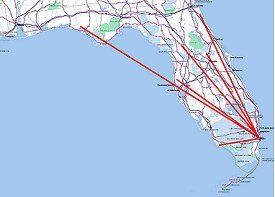
Daily Air Routes On Company King Air & Cesnas
